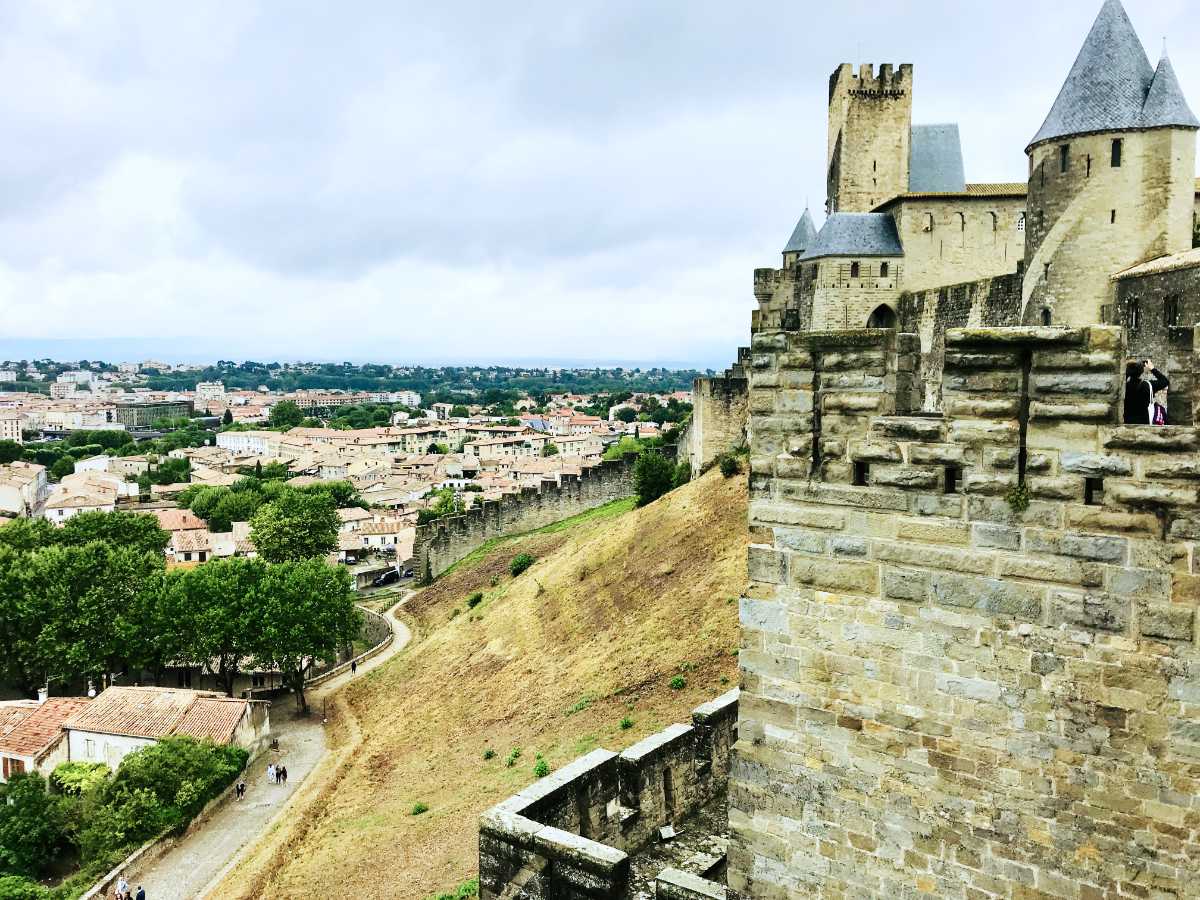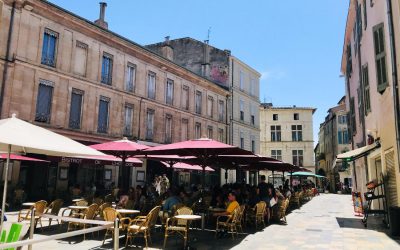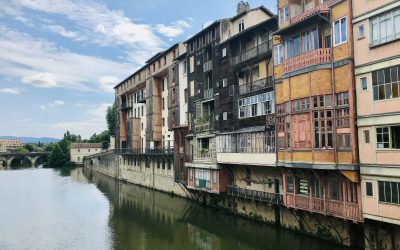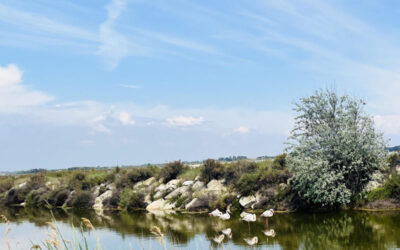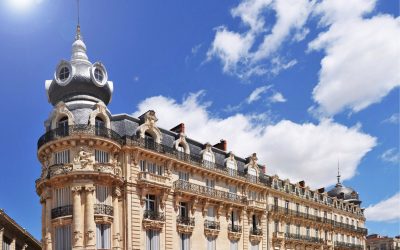When you are driving through Carcassonne, from a distance it looks just like another French town. And then you see it, the imposing citadel that towers on a hilltop surrounded by wide, stone ramparts.
La Cité de Carcassonne and its famous Château Comtal, with its enormous walls, look and feel like they belong in another time. And indeed they do, the walled city dates back to the Middle ages, when wars were waged on horseback and moats were enough to keep invaders out.
For a long time the architectural wonder that is Château Comtal inspired fear in those that looked upon it. Today it is one of the most famous tourist attractions in France, a landmark drawing visitors to the area from far and wide.
This UNESCO world heritage town is located in the south of France in the French region of Occitanie, next door to the region of Provence and the Côte d’Azur. There are several beautiful towns nearby including Toulouse, Montpellier, Arles, Nimes and Uzès, making this a popular destinations of visitors.
This charming little town offers the best of both worlds, filled with rich history while also containing a modern edge. The beautiful Canal du Midi runs through its center, and within minutes of the towering fortress, you will find vineyards, tiny villages, and beautiful French countryside.
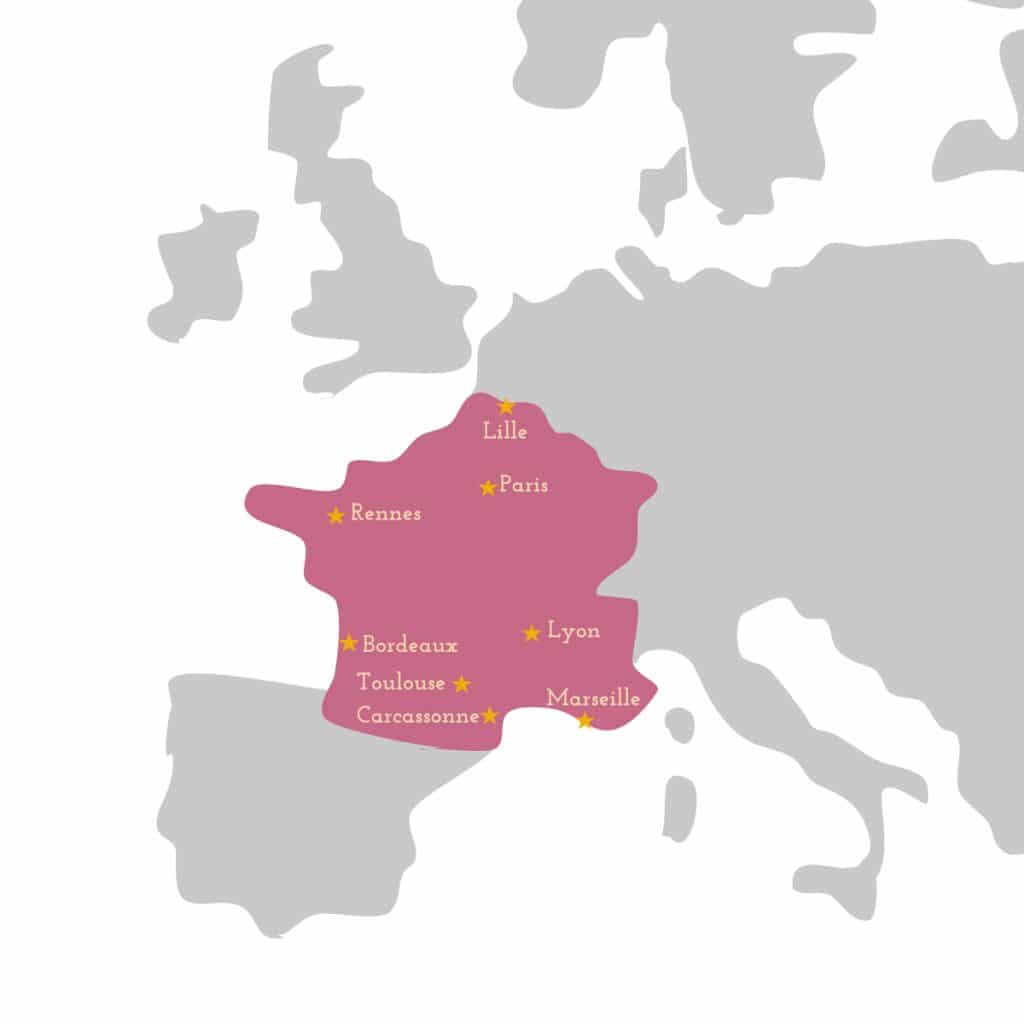
The town is rich in history. The Cité at its core has been conquered, rebuilt and conquered again so many times it may seem as though every stone is from a different century.
Today, much of the Cité’s archaeological sites remain to explored, as it is protected by government restrictions and UNESCO. So let’s explore the town of Carcassonne, shall we? Allons-y!
History
At the beginning, it was a Gaulish settlement and then in the 3rd century AD, the Romans decided to transform it into a fortified town. The Romans ran the town followed by the Saracens in 725 AD.
The Gallo-Roman walls were rebuilt during Visigoths occupation in the 5th and 6th centuries, and again in the 12th century when Carcassonne became a stronghold for the Bernard Aton, Vicomte of Albi, the leader of a breakaway Catholic sect known as Catharism.
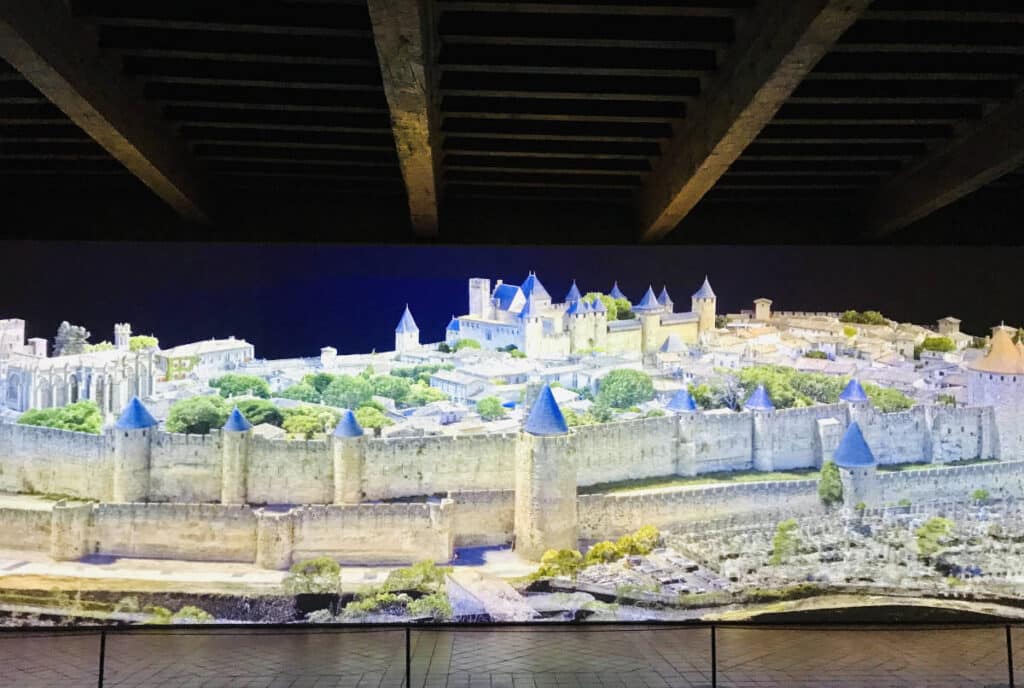
It took a 20-year war to defeat the Vicomte of Albi, in a period known as the Albigensian Crusade. After the war Carcassonne became a border fortress between France and the Crown of Aragon.
Saint King Louis IX founded the new part of the town with his successors rebuilding and reinforcing the outer ramparts. During the Hundred Years’ War, Edward the English Black Prince failed to take the city in 1355, although his troops destroyed the Lower Town.
In 1659, after the Treaty of the Pyrenees, the province of Roussillon became a part of France and Carcassonne lost its military significance. The château and its fortifications were abandoned and fell into ruin.
It was not until the 1850s when Carcassonne was restored by Emperor Napoleon III‘s architect Eugène Viollet-le-Duc. (Napoleon III was also the guy who reconstructed much of Paris with his other architect Baron Haussmann.)
He was heavily critiqued during his lifetime for his renovation, making small mistakes like using terracotta tiles instead of the historic slate for the roofs. Nevertheless, his restoration today has been hailed an success, for preserving the Cité de Carcassonne and Basilica of Saints Nazarius and Celsus.

The arrival of WWII would however put all of Viollet-le-Duc’s work in jeopardy. Carcassonne became a base for the German Reich, with the French resistance in the countryside, attempting to foil their plans.
The Basilica and the tunnels around it became an important tool during the occupation, including in 1944 an American soldier was hidden here by the Resistance for 2 nights, right under the noses of the enemy.
Sully de Fontaine, a retired colonel of the American special forces, (whose family originated in north of France) would return several times after the war, including in 2001 when he was awarded the City medal.
Today Carcassonne is world-renowned heritage site, with millions of visitors flocking to it every year.
Things to do and see
1. Visit La Cité de Carcassonne
Visitors usually start their visit to Carcassonne with a visit to La Cité itself. This is the Old part of town, just outside the main château walls.
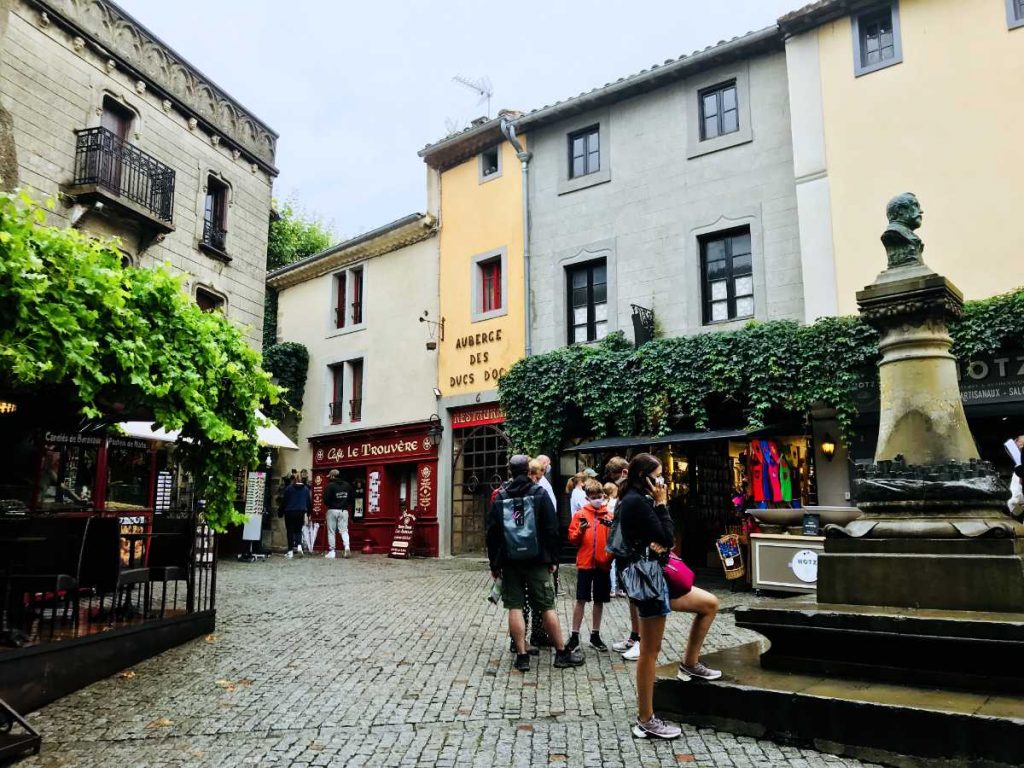
The streets located inside the citadel are a winding labyrinth of cobbled streets and winding alleyways, bringing back visions of Game of Thrones. Half the fun is just getting lost and seeing what you find.
Inside the walls you’ll find plenty of restaurants, cafes, souvenir shops and museums.
2. Inside Château Comtal
Above the Cité de Carcassonne is the imposing Château Comtal and its double line of fortifications.
This double line of fortifications was put in place after the defeat of Catharism and Carcassonne by Catholic Pope Innocent III and the French King in the 12th century.
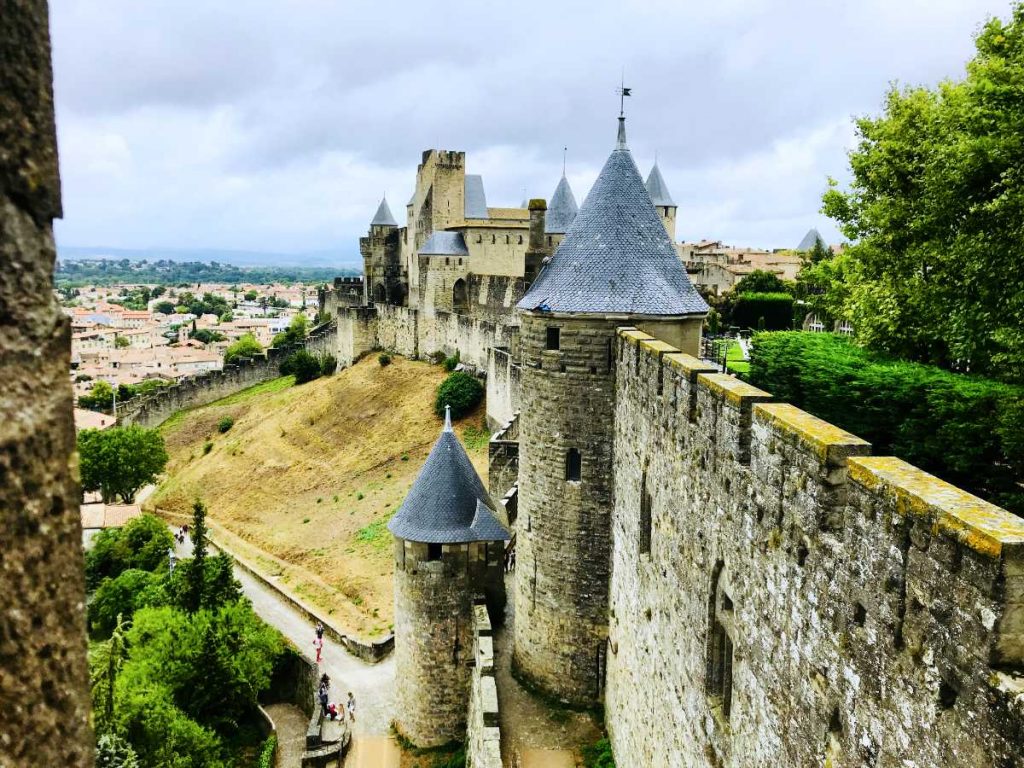
It was the lack of water that led to the fall of Carcassonne, so after the citadel was acquired by the French crown, new wells and access to the river Aude was constructed, along with the double like of fortifications.
There are 53 towers and barbicans to prevent attacks. One of these towers housed the “Catholic Inquisition” in the 13th century and is still known as “The Inquisition Tower”.
The castle and the citadel cover over 11 hectares (27 hectares), enough to house over 4000 people in its day. Inside the Château, you can see portions of painted walls, as well as a few small statues that have lasted.
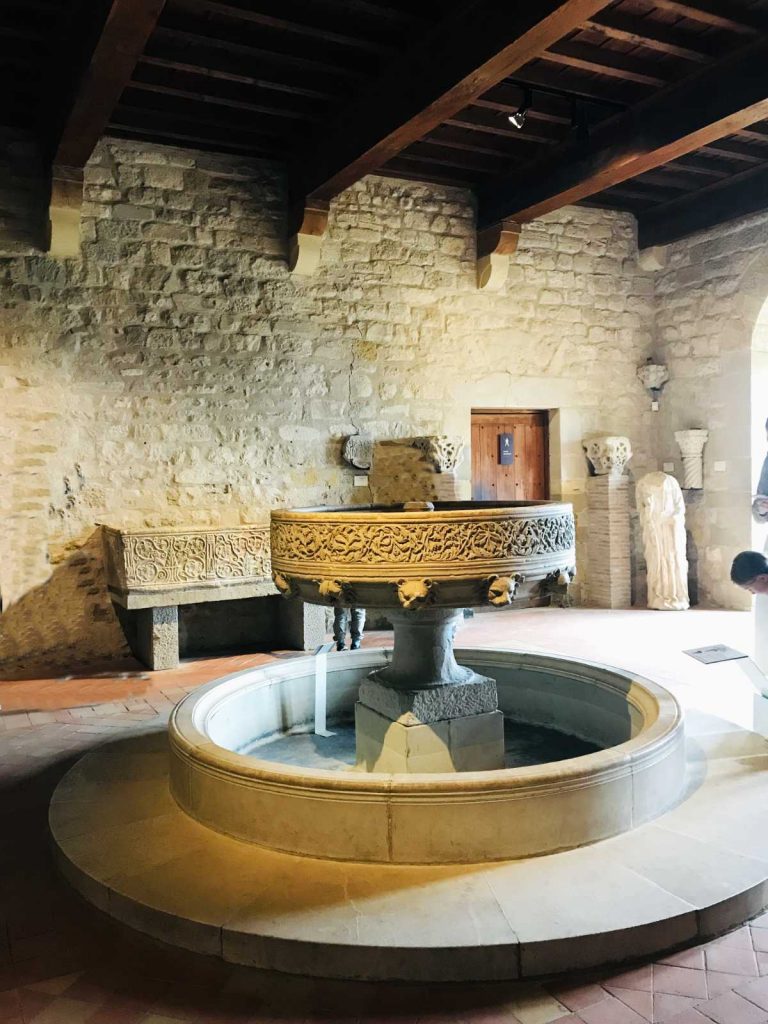
You can enter the Château Comtal for a tour or along with an audio-guide. There is a small café and tea room restaurant inside the castle for refreshments, so you can take as long as you need inside.
3. Walk along the Ramparts
The double line of fortifications that surround the town are incredible to look at, let alone climb. You are able to head up onto the ramparts and explore much if the 3km that surrounds the city, as well as some of the 53 towers.
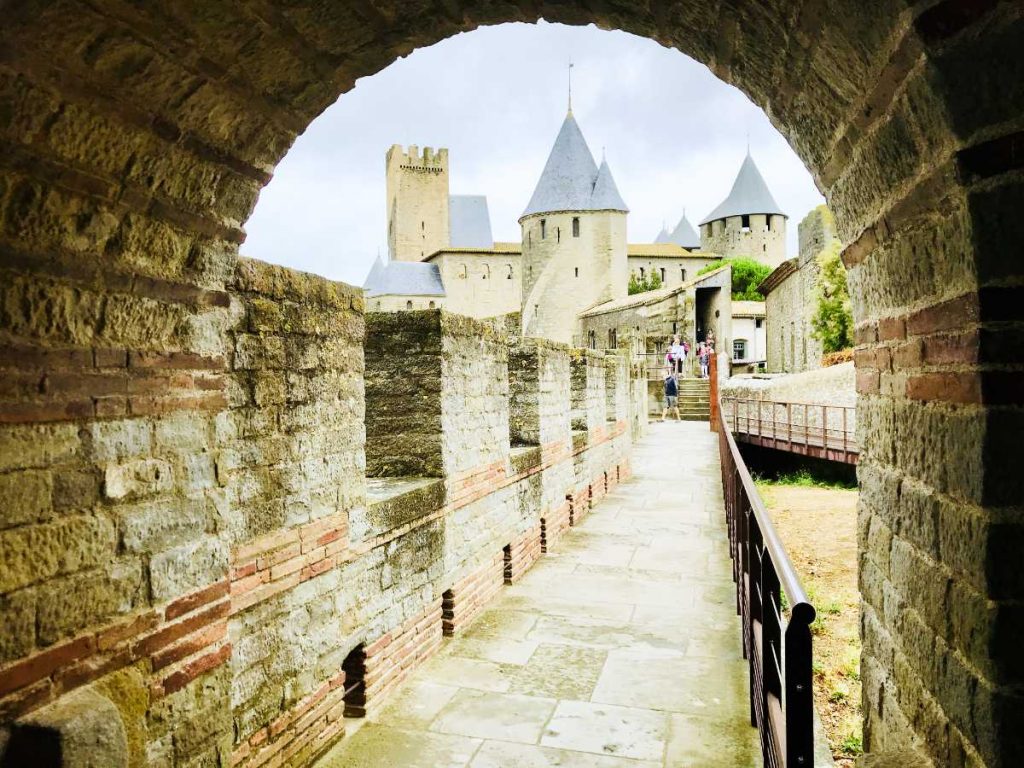
From here you have incredible views of the new part of town and surrounding French countryside.
If you opt for a tour or the audio-guided tour, you can find out all about how the walls were built, as well as the different traps, barbicans, fortifications and gates that are still visible all around the Cité.
3. Basilica of Saints Nazarius and Celsus
Right next to Château Comtal is the Basilica of Saints Nazarius and Celsus. The original church is believed to have been constructed in the 6th century during the reign of Theodoric the Great, ruler of the Visigoths.
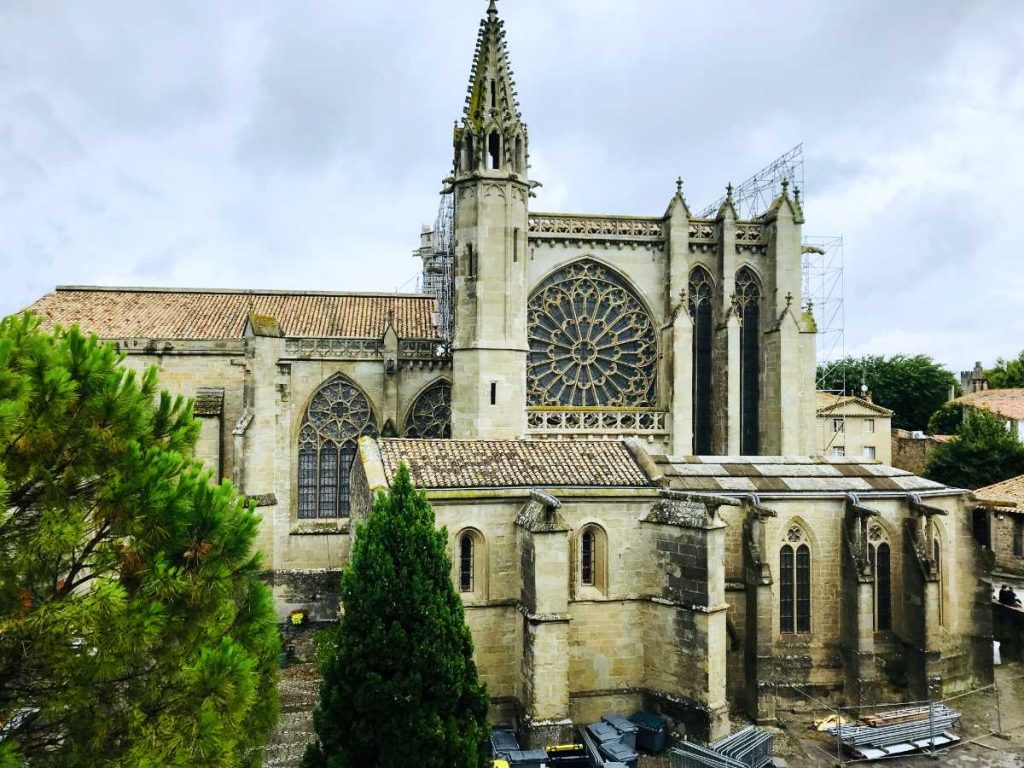
It is unclear how the cathedral survived during the occupation of Carcassonne by the Umayyad Saracen (Muslim) conquest in 725 from the Spanish Iberia.
After the capture of Carcassonne by Pépin le Bref in 759, tradition has it that Emperor Charlemagne rebuilt the Saint Church Nazaire.
The buildings suffered from the siege of Carcassonne in 1209 because to repair and strengthen the ramparts, it was necessary to find stones which were taken by demolishing the refectory, the cellar and the stables of the chapter.
These were all rebuilt by Viollet-le-Duc as part of his overall restorations. The inside of the Basilica is in Gothic and Roman styles, from the stained glass windows to the sculptures and other decorations of the church. The facades have many windows dating back to the 13th-14th centuries depicting scenes from the life of Christ and his apostles.
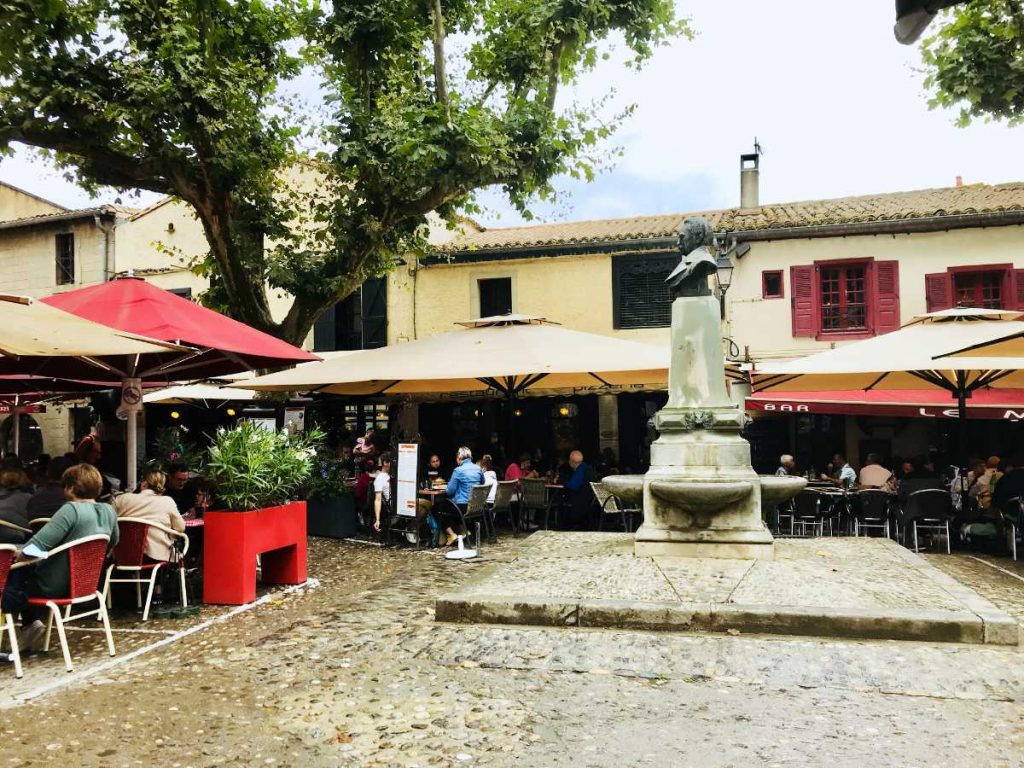
4. Head towards Bastide Saint-Louis
Although the Cité is the main attraction, you should not miss out exploring the Lower City.
On the other side of the Aude river, this area is known as Bastide Saint-Louis and is much newer, offering a completely different ambiance to the streets that tower above. You’ll find plenty of high street shops and restaurants in this area as well.
5. Enjoy the cassoulet
Carcassonne is famous for its Cassoulet, which is one of the favorite dishes in the Occitanie and southwestern France. It is made up of white haricot beans, sausage, and duck or goose confit.
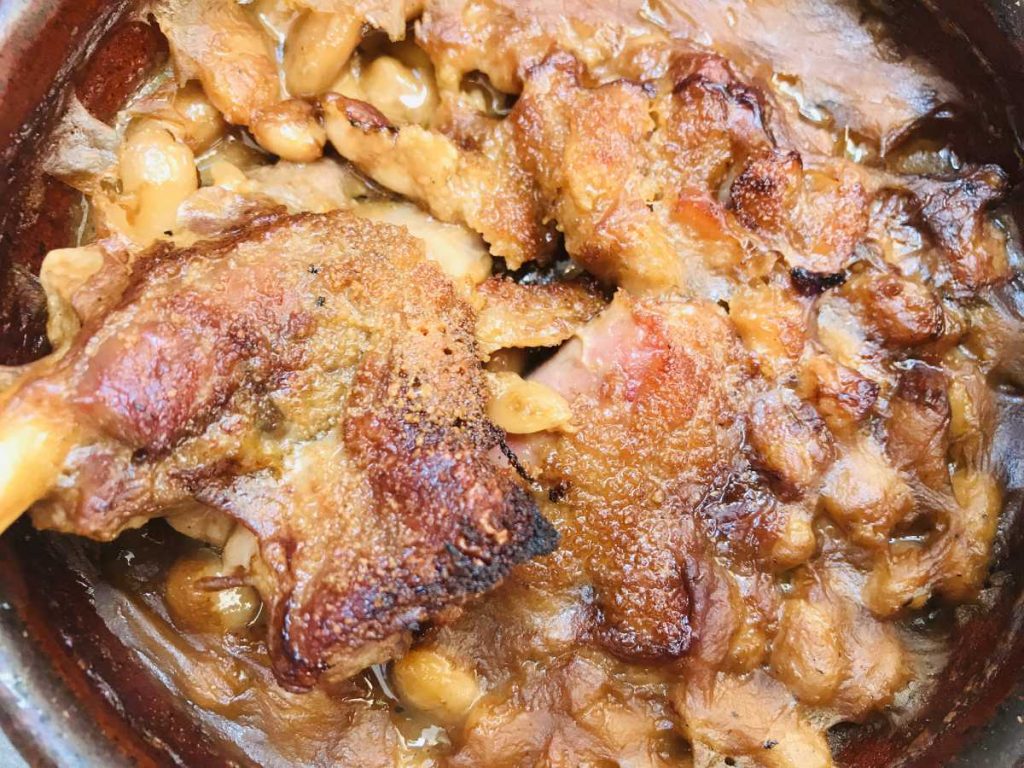
Carcassonne has its own version of the dish, as partridge meat is also added. There is nothing better than sitting within the busy walls of the old town, enjoying a tasty, warming dish, washed down with some of the region’s finest wine. (Alternatively, you can make it at home with this Cassoulet instant pot recipe).
6. Carcassonne Cathedral
Located in the Bastide is the Carcassone cathedral. The building was built in the thirteenth century as a parish church, dedicated to Saint Michael. Following war damage in the fourteenth century it was rebuilt as a fortified church.
This building was also one of the ones restored by Viollet-le-Duc, before he started working on the Château Comtal ramparts.
7. Canal du Midi
The Canal du Midi is a man-made river constructed from in 1681, located in the Languedoc-Roussillon region in France.
This canal crosses the region between Toulouse, along Carcassonne and towards the Mediterranean Sea, and ranks as one of the greatest feats of engineering of all time.
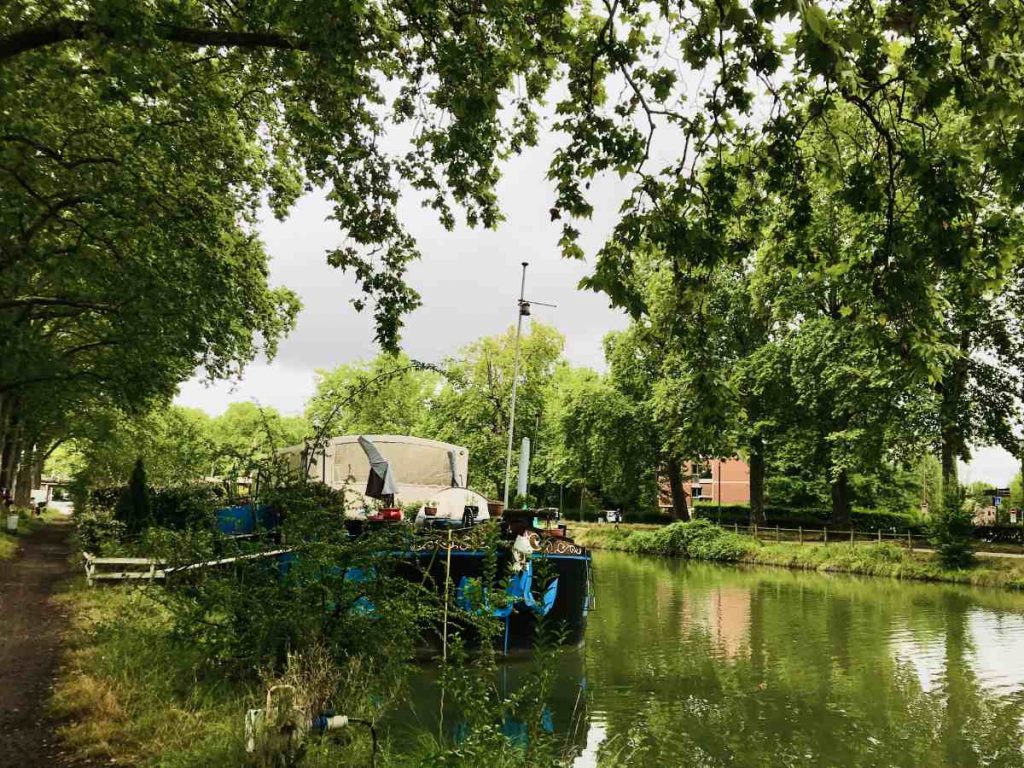
In Carcassone, boats take off and arrive from the port in front of the SNCF train station. There are short 2 hour boat cruises that leave from here as well, if you want to explore just a portion of the canal.
It is also exceptionally beautiful, with houseboats along its tree-lined quais and working locks that still adjust water levels. Go for a stroll, a bike ride with a tour guide, or take a boat ride onto its waters. You can read more about the Canal du Midi here.
8. Languedoc-Roussillon wines
The Languedoc-Roussillon area in the Occitanie doesn’t have a high number of wines compared to the other French wine regions, but it does have its own appellations concentrating on quality over quantity.
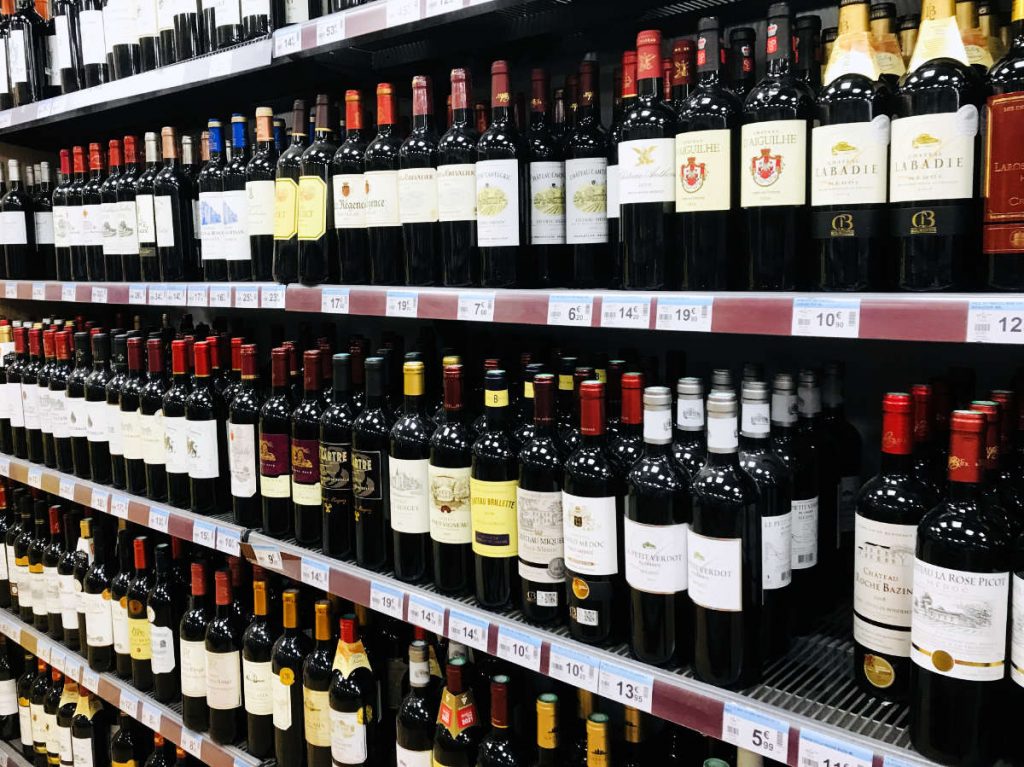
It does also have the oldest wine in the world, the Blanquette-de-Limoux from the village of Limoux. It is a sparkling wine that is even older than champagne.
The story from the Limoux side is that a monk from Limoux gave the recipe to the monks from Champagne, who were then able to market it a way that the Limoux monks could not. However, this has not been proven. Today the Blanquette-de-Limoux remains in a category by itself, separate from other French sparkling wines, the crémants.
Other big wine names in the area are the Fitou which is a red wine, and the Corbières which comes in red, white, and rosé. These are mid-range wines of decent quality (and average price tags!). You can buy a bottle of Languedoc Occitanie wine here.
9. Visit la ville rose, Toulouse
About 1 hour away from Carcassone is the bustling city of Toulouse. With a population of around 500k, Toulouse is the 4th largest city in France.
It is famous for its buildings of beautiful pink terracotta brick, which have given it the nickname La Ville Rose (meaning “Pink city”).
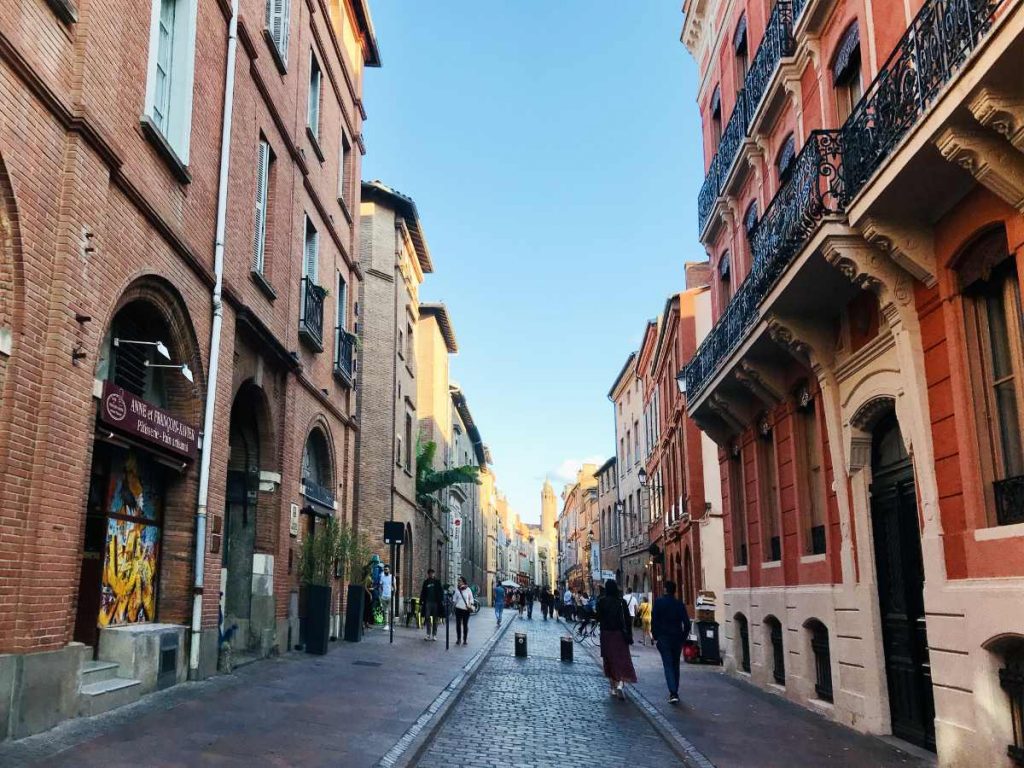
Toulouse is also best known for being the French headquarters of Airbus since 1921, which has greatly contributed to the growth of the city and its economy.
These days it is a lively and busy city in the Occitanie Region, that is a popular destination for tourists looking filled for a bit of sun and culture. With its close proximity to Spain, there is a definite hint of an influence in the local food and lifestyle.
From cafés to Michelin-starred restaurants, it is a city with a lively dining scene and plenty of local specialties. It is also a city where you can enjoy nature and activities like canoeing, kayaking and biking along the Canal du Midi which ends in Toulouse. You can read more about visiting Toulouse here.
How to get to Carcassonne?
By plane: The town is easy to get to as it has its own airport, with flights from all over Europe.
By car: It is approximately a 1 hour’s drive from the bustling city of Toulouse, or 3 hours from Marseille. If you are driving from Paris, it will take around 8 hours.
By train: There is no high-speed train into Carcassone. There are slower trains however, such as the Intercities or TER trains from Marseille, Toulouse, or Montpellier.
How many days should you spend here?
If you intend to visit Carcassone as a day trip, head to the Cité early to explore the winding passageways before they are filled with tourists to get the best experience.
On the other hand, I recommend spending at least 1 night in the town. After all, how often can you say you stayed in a centuries-old medieval fortress town?
Where should you stay?
For the full experience in Carcassone, consider staying close to the old city walls:
- €€€ – Hôtel du Pont-Vieux
- €€€€€ – Hôtel de la Cité et Spa
Near Bastide Saint-Louis:
- €€€ – Hotel Montsegur
An easy compromise is in between Bastide Saint Louis and the Old City walls (next to Aude river):

So enjoy a trip back into time, with a trip to this sunny history-filled corner of France. You won’t regret it. Bon vogage and à bientôt!
With contribution from: Victoria Picking | Travels On Uneven Pavements |Instagram
